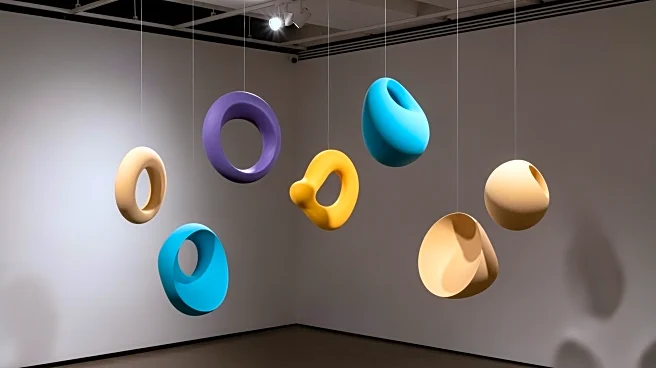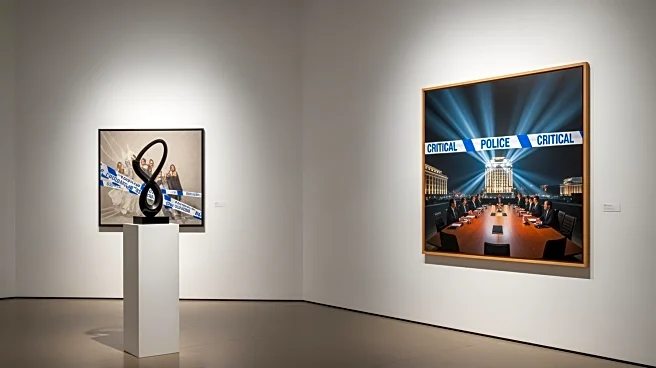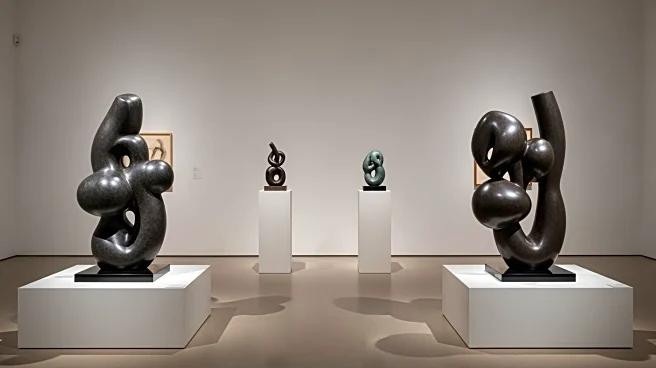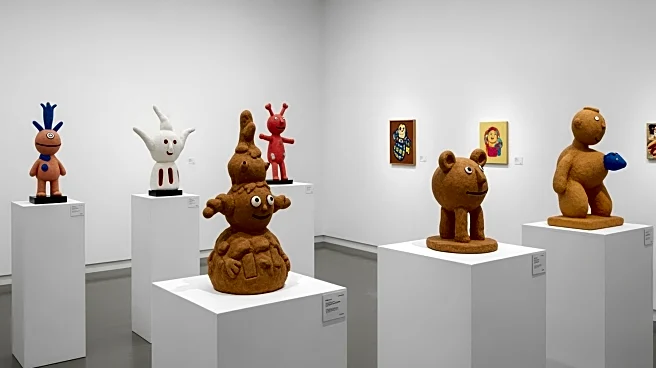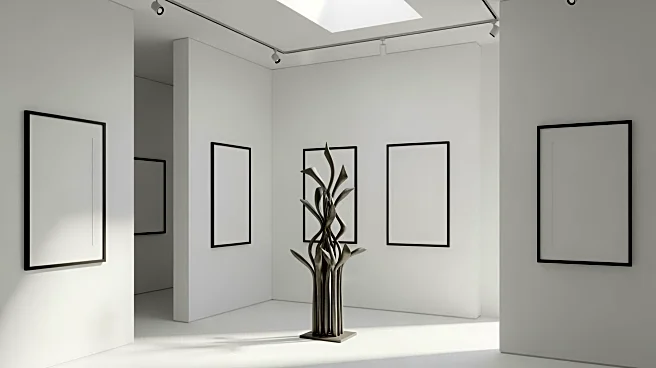What's Happening?
In Shanghai, a new art event titled 'Hang Over Shanghai' is set to take place from November 9 to 16, offering an alternative to the city's major art fairs, Art021 and West Bund Art and Design. The event,
organized by Lingzhi Zhuang and Lingteng Ou, will feature nine exhibitors in the former French Concession area. Unlike traditional fairs, 'Hang Over Shanghai' will not have booths, aiming to create an exhibition-like atmosphere. The event includes galleries such as P21 from Seoul, Layr from Vienna, and Turnus from Warsaw. This initiative provides a more affordable platform for galleries to showcase their work, particularly appealing to smaller outfits that may struggle with the logistics and costs of larger fairs.
Why It's Important?
The introduction of 'Hang Over Shanghai' highlights a growing trend in the art world where smaller, independent events are emerging as alternatives to large, impersonal fairs. This shift is significant as it allows galleries to participate in the art market without the substantial financial burden associated with major fairs. It also provides a platform for emerging artists and galleries to gain exposure in a competitive market like China. The event's focus on creating a fun yet serious environment could attract collectors and media attention, potentially influencing the dynamics of art exhibitions in Shanghai and beyond.
What's Next?
As 'Hang Over Shanghai' unfolds, it will be interesting to observe the response from collectors, media, and the broader art community. The success of this event could encourage more galleries to explore alternative exhibition formats, potentially leading to a diversification of the art market. Additionally, the event's organizers plan to host various activities throughout its duration, aiming to engage attendees and foster a vibrant art scene. The outcome of 'Hang Over Shanghai' may influence future art events in Shanghai and inspire similar initiatives in other cities.
Beyond the Headlines
The emergence of 'Hang Over Shanghai' reflects broader changes in the art industry, where traditional models are being challenged by innovative approaches. This development raises questions about the sustainability of large art fairs and the potential for smaller events to reshape the market. It also highlights the importance of accessibility and inclusivity in the art world, as smaller galleries and artists seek opportunities to showcase their work without prohibitive costs.
